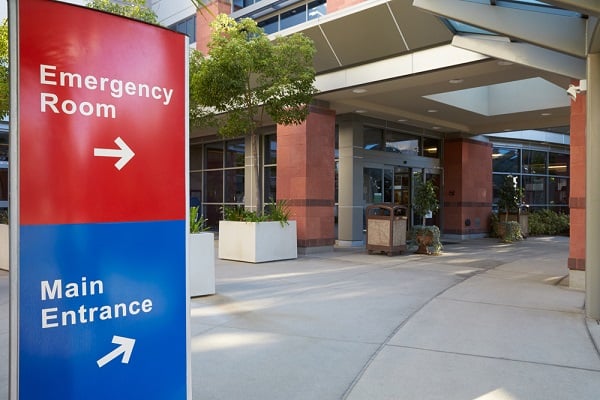 Community hospitals areattractive to pharma companies because 85 percent of cancerpatients get care in such facilities. But the smaller hospitalsoften aren't equipped for trials. (Photo: Shutterstock)
Community hospitals areattractive to pharma companies because 85 percent of cancerpatients get care in such facilities. But the smaller hospitalsoften aren't equipped for trials. (Photo: Shutterstock)
Small hospitals need money. Drug companies need patients fortests. Both sides say they've found a solution.
|Regional hospitals across the U.S. are banding together to makeit easier for pharmaceutical companies to use their facilities forclinical trials, a strategy that could boostrevenue and give drugmakers increased access to patients.
|Related: Hospitals band together on new generic-drugventure
|Geisinger Health and five other local health systems in NewJersey and Pennsylvania have formed a consortium to increaseparticipation in drug trials. A group of rural hospitals in NorthDakota has ramped up its partnerships in the past two years to domore clinical trials. And in Ohio two cancer centers have partneredto expand trial accessibility.
|“As a group we're stronger than just one,” said James Brazeal,Geisinger chief administrative research officer. “We're able toleverage that so we have more of an ability to participate, so thatwe can attract some of the trials that we couldn't attractbefore.”
|Drugmakers are constantly searching for patients for clinicaltrials, which are complicated, expensive and can take years tocomplete. Finding the right patients quickly and easily has becomemore important as the industry focuses on treatments for rarediseases. In cancer alone, only 3 percent to 6 percent of eligiblepatients participate in clinical trials, according to the CancerResearch Institute.
|Good pay
Pharmaceutical companies pay hospitals handsomely to test theirmedicines — sometimes more than $10,000 a patient, according toHalloran Consulting Group. Centralizing the process at the 4,500regional hospitals in the U.S. — where technology and resources areoften inadequate — can make a trial as much as 20 percent moreprofitable for participating facilities, according to GuidestarResearch, which helps hospitals host trials.
|By working as a single unit, small hospitals hope to competewith urban medical centers like Dana-Farber Cancer Center in Bostonand Johns Hopkins University School of Medicine in Baltimore, whichfor decades have hosted most trials thanks to a larger base ofpatients and a staff of top doctors. For drugmakers, trials acrossseveral hospitals are cheaper and more efficient because they facefewer regulatory review boards.
|It's a welcome alternative because hospitals increasinglyresolve budget problems by getting acquired by larger systems: Thefirst quarter of this year included 30 announced mergers. Thepressure is also driven by falling revenue from insurancereimbursements for services like MRIs.
|“We go to the hospital and can say, 'Hey there is a clinicaltrial sponsored by X pharmaceutical company that can help patientsbring a new drug to treatment and can also help you with yourbottom line and offset some losses in other areas,”' said SeanWalsh, managing partner at Guidestar Research.
|Other options, such as trials sponsored by the National CancerInstitute, a federal agency, pay so little that they can leavefacilities in the red.
|“Some say, 'I'm getting out completely, I'm going to do moretrials with pharma companies,'” said Kurt Oettel, a hematologist atGundersen Health System, a nonprofit based in La Crosse,Wisconsin.
|Collaboration has been shown to work in other sectors of healthcare, including among doctors in private practice. US OncologyNetwork, which has more than 1,400 cancer physicians, helpedstreamline trial work for Johnson & Johnson's blockbustermyeloma drug Imbruvica. That helped enroll patients quicker thanwhat might have taken up to 18 months, said Jeff Sharman, ahematologist at Willamette Valley Cancer Institute in Oregon whoworks with US Oncology, a unit of drug wholesaler McKessonCorp.
|“A two-month time window from blank paper to patient enrollmentis extraordinary,” Sharman said.
|Cancer patients
Enrollment time is crucial to saving money because the averagecost of drug development has ballooned to $2.6 billion from $1billion in the early 2000s, while 20 percent of trials are nevercompleted.
|Community hospitals are attractive to pharma companies because85 percent of cancer patients get care in such facilities. But thesmaller hospitals, often lacking adequate staffing, usually aren'tequipped for trials.
|J&J, which is working with the Geisinger consortium, said a“central contact with common processes” will help improve researchin drug development.
|“We share the goal of seeing new and effective treatments beingdeveloped and provided to patients in the most efficient meanspossible,” said Peter Ronco, J&J's head of global clinicaldevelopment operations.
|Complicating the drug-development process is a federalrequirement that trial designs be approved by an institutionalreview board tasked with protecting patients' rights and safety.Collaborating can mean just one review, a welcome alternative to,say, 40 hospitals with potentially as many review boards.
|“If we can do a trial instead with only one IRB for review —holy cow, that's amazing,” said Sandra Alten Maddock, chiefexecutive officer of IMARC Research, a contract researchorganization.
|In the Geisinger group, members hope up to 20 percent of trialsover the next five years will come via the consortium, which willnegotiate directly with pharmaceutical industry.
|North Dakota-based Sanford Health, which runs 45 ruralfacilities, is doing more partnering and offering 300 trials. Thework helps patients but also drugmakers, said David Pearce, wholeads Sanford's research.
|“No therapy will be approved if it's just done at Johns Hopkinsor just done at Sanford Health,” he said. “You need to show itworks at multiple sites.”
|Copyright 2018 Bloomberg. All rightsreserved. This material may not be published, broadcast, rewritten,or redistributed.
Complete your profile to continue reading and get FREE access to BenefitsPRO, part of your ALM digital membership.
Your access to unlimited BenefitsPRO content isn’t changing.
Once you are an ALM digital member, you’ll receive:
- Critical BenefitsPRO information including cutting edge post-reform success strategies, access to educational webcasts and videos, resources from industry leaders, and informative Newsletters.
- Exclusive discounts on ALM, BenefitsPRO magazine and BenefitsPRO.com events
- Access to other award-winning ALM websites including ThinkAdvisor.com and Law.com
Already have an account? Sign In
© 2024 ALM Global, LLC, All Rights Reserved. Request academic re-use from www.copyright.com. All other uses, submit a request to [email protected]. For more information visit Asset & Logo Licensing.








